Dali Kaafar
A Large-Scale Empirical Analysis of Custom GPTs' Vulnerabilities in the OpenAI Ecosystem
May 13, 2025Abstract:Millions of users leverage generative pretrained transformer (GPT)-based language models developed by leading model providers for a wide range of tasks. To support enhanced user interaction and customization, many platforms-such as OpenAI-now enable developers to create and publish tailored model instances, known as custom GPTs, via dedicated repositories or application stores. These custom GPTs empower users to browse and interact with specialized applications designed to meet specific needs. However, as custom GPTs see growing adoption, concerns regarding their security vulnerabilities have intensified. Existing research on these vulnerabilities remains largely theoretical, often lacking empirical, large-scale, and statistically rigorous assessments of associated risks. In this study, we analyze 14,904 custom GPTs to assess their susceptibility to seven exploitable threats, such as roleplay-based attacks, system prompt leakage, phishing content generation, and malicious code synthesis, across various categories and popularity tiers within the OpenAI marketplace. We introduce a multi-metric ranking system to examine the relationship between a custom GPT's popularity and its associated security risks. Our findings reveal that over 95% of custom GPTs lack adequate security protections. The most prevalent vulnerabilities include roleplay-based vulnerabilities (96.51%), system prompt leakage (92.20%), and phishing (91.22%). Furthermore, we demonstrate that OpenAI's foundational models exhibit inherent security weaknesses, which are often inherited or amplified in custom GPTs. These results highlight the urgent need for enhanced security measures and stricter content moderation to ensure the safe deployment of GPT-based applications.
Property-Preserving Hashing for $\ell_1$-Distance Predicates: Applications to Countering Adversarial Input Attacks
Apr 23, 2025Abstract:Perceptual hashing is used to detect whether an input image is similar to a reference image with a variety of security applications. Recently, they have been shown to succumb to adversarial input attacks which make small imperceptible changes to the input image yet the hashing algorithm does not detect its similarity to the original image. Property-preserving hashing (PPH) is a recent construct in cryptography, which preserves some property (predicate) of its inputs in the hash domain. Researchers have so far shown constructions of PPH for Hamming distance predicates, which, for instance, outputs 1 if two inputs are within Hamming distance $t$. A key feature of PPH is its strong correctness guarantee, i.e., the probability that the predicate will not be correctly evaluated in the hash domain is negligible. Motivated by the use case of detecting similar images under adversarial setting, we propose the first PPH construction for an $\ell_1$-distance predicate. Roughly, this predicate checks if the two one-sided $\ell_1$-distances between two images are within a threshold $t$. Since many adversarial attacks use $\ell_2$-distance (related to $\ell_1$-distance) as the objective function to perturb the input image, by appropriately choosing the threshold $t$, we can force the attacker to add considerable noise to evade detection, and hence significantly deteriorate the image quality. Our proposed scheme is highly efficient, and runs in time $O(t^2)$. For grayscale images of size $28 \times 28$, we can evaluate the predicate in $0.0784$ seconds when pixel values are perturbed by up to $1 \%$. For larger RGB images of size $224 \times 224$, by dividing the image into 1,000 blocks, we achieve times of $0.0128$ seconds per block for $1 \%$ change, and up to $0.2641$ seconds per block for $14\%$ change.
Bot Wars Evolved: Orchestrating Competing LLMs in a Counterstrike Against Phone Scams
Mar 10, 2025Abstract:We present "Bot Wars," a framework using Large Language Models (LLMs) scam-baiters to counter phone scams through simulated adversarial dialogues. Our key contribution is a formal foundation for strategy emergence through chain-of-thought reasoning without explicit optimization. Through a novel two-layer prompt architecture, our framework enables LLMs to craft demographically authentic victim personas while maintaining strategic coherence. We evaluate our approach using a dataset of 3,200 scam dialogues validated against 179 hours of human scam-baiting interactions, demonstrating its effectiveness in capturing complex adversarial dynamics. Our systematic evaluation through cognitive, quantitative, and content-specific metrics shows that GPT-4 excels in dialogue naturalness and persona authenticity, while Deepseek demonstrates superior engagement sustainability.
Targeted Therapy in Data Removal: Object Unlearning Based on Scene Graphs
Nov 25, 2024


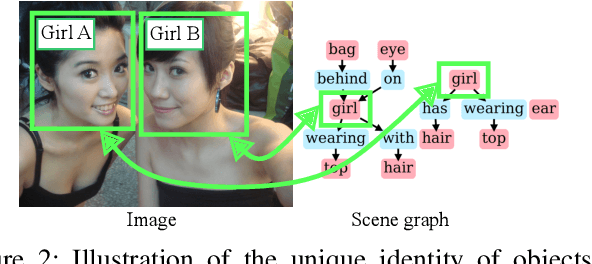
Abstract:Users may inadvertently upload personally identifiable information (PII) to Machine Learning as a Service (MLaaS) providers. When users no longer want their PII on these services, regulations like GDPR and COPPA mandate a right to forget for these users. As such, these services seek efficient methods to remove the influence of specific data points. Thus the introduction of machine unlearning. Traditionally, unlearning is performed with the removal of entire data samples (sample unlearning) or whole features across the dataset (feature unlearning). However, these approaches are not equipped to handle the more granular and challenging task of unlearning specific objects within a sample. To address this gap, we propose a scene graph-based object unlearning framework. This framework utilizes scene graphs, rich in semantic representation, transparently translate unlearning requests into actionable steps. The result, is the preservation of the overall semantic integrity of the generated image, bar the unlearned object. Further, we manage high computational overheads with influence functions to approximate the unlearning process. For validation, we evaluate the unlearned object's fidelity in outputs under the tasks of image reconstruction and image synthesis. Our proposed framework demonstrates improved object unlearning outcomes, with the preservation of unrequested samples in contrast to sample and feature learning methods. This work addresses critical privacy issues by increasing the granularity of targeted machine unlearning through forgetting specific object-level details without sacrificing the utility of the whole data sample or dataset feature.
Preempting Text Sanitization Utility in Resource-Constrained Privacy-Preserving LLM Interactions
Nov 18, 2024Abstract:Individuals have been increasingly interacting with online Large Language Models (LLMs), both in their work and personal lives. These interactions raise privacy issues as the LLMs are typically hosted by third-parties who can gather a variety of sensitive information about users and their companies. Text Sanitization techniques have been proposed in the literature and can be used to sanitize user prompts before sending them to the LLM. However, sanitization has an impact on the downstream task performed by the LLM, and often to such an extent that it leads to unacceptable results for the user. This is not just a minor annoyance, with clear monetary consequences as LLM services charge on a per use basis as well as great amount of computing resources wasted. We propose an architecture leveraging a Small Language Model (SLM) at the user-side to help estimate the impact of sanitization on a prompt before it is sent to the LLM, thus preventing resource losses. Our evaluation of this architecture revealed a significant problem with text sanitization based on Differential Privacy, on which we want to draw the attention of the community for further investigation.
Practical, Private Assurance of the Value of Collaboration
Oct 04, 2023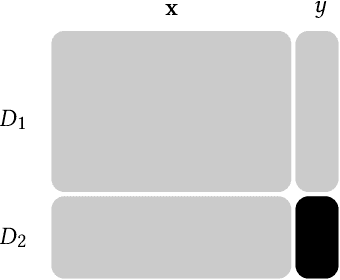



Abstract:Two parties wish to collaborate on their datasets. However, before they reveal their datasets to each other, the parties want to have the guarantee that the collaboration would be fruitful. We look at this problem from the point of view of machine learning, where one party is promised an improvement on its prediction model by incorporating data from the other party. The parties would only wish to collaborate further if the updated model shows an improvement in accuracy. Before this is ascertained, the two parties would not want to disclose their models and datasets. In this work, we construct an interactive protocol for this problem based on the fully homomorphic encryption scheme over the Torus (TFHE) and label differential privacy, where the underlying machine learning model is a neural network. Label differential privacy is used to ensure that computations are not done entirely in the encrypted domain, which is a significant bottleneck for neural network training according to the current state-of-the-art FHE implementations. We prove the security of our scheme in the universal composability framework assuming honest-but-curious parties, but where one party may not have any expertise in labelling its initial dataset. Experiments show that we can obtain the output, i.e., the accuracy of the updated model, with time many orders of magnitude faster than a protocol using entirely FHE operations.
On the Adversarial Inversion of Deep Biometric Representations
Apr 12, 2023Abstract:Biometric authentication service providers often claim that it is not possible to reverse-engineer a user's raw biometric sample, such as a fingerprint or a face image, from its mathematical (feature-space) representation. In this paper, we investigate this claim on the specific example of deep neural network (DNN) embeddings. Inversion of DNN embeddings has been investigated for explaining deep image representations or synthesizing normalized images. Existing studies leverage full access to all layers of the original model, as well as all possible information on the original dataset. For the biometric authentication use case, we need to investigate this under adversarial settings where an attacker has access to a feature-space representation but no direct access to the exact original dataset nor the original learned model. Instead, we assume varying degree of attacker's background knowledge about the distribution of the dataset as well as the original learned model (architecture and training process). In these cases, we show that the attacker can exploit off-the-shelf DNN models and public datasets, to mimic the behaviour of the original learned model to varying degrees of success, based only on the obtained representation and attacker's prior knowledge. We propose a two-pronged attack that first infers the original DNN by exploiting the model footprint on the embedding, and then reconstructs the raw data by using the inferred model. We show the practicality of the attack on popular DNNs trained for two prominent biometric modalities, face and fingerprint recognition. The attack can effectively infer the original recognition model (mean accuracy 83\% for faces, 86\% for fingerprints), and can craft effective biometric reconstructions that are successfully authenticated with 1-vs-1 authentication accuracy of up to 92\% for some models.
DDoD: Dual Denial of Decision Attacks on Human-AI Teams
Dec 07, 2022
Abstract:Artificial Intelligence (AI) systems have been increasingly used to make decision-making processes faster, more accurate, and more efficient. However, such systems are also at constant risk of being attacked. While the majority of attacks targeting AI-based applications aim to manipulate classifiers or training data and alter the output of an AI model, recently proposed Sponge Attacks against AI models aim to impede the classifier's execution by consuming substantial resources. In this work, we propose \textit{Dual Denial of Decision (DDoD) attacks against collaborative Human-AI teams}. We discuss how such attacks aim to deplete \textit{both computational and human} resources, and significantly impair decision-making capabilities. We describe DDoD on human and computational resources and present potential risk scenarios in a series of exemplary domains.
Unintended Memorization and Timing Attacks in Named Entity Recognition Models
Nov 04, 2022



Abstract:Named entity recognition models (NER), are widely used for identifying named entities (e.g., individuals, locations, and other information) in text documents. Machine learning based NER models are increasingly being applied in privacy-sensitive applications that need automatic and scalable identification of sensitive information to redact text for data sharing. In this paper, we study the setting when NER models are available as a black-box service for identifying sensitive information in user documents and show that these models are vulnerable to membership inference on their training datasets. With updated pre-trained NER models from spaCy, we demonstrate two distinct membership attacks on these models. Our first attack capitalizes on unintended memorization in the NER's underlying neural network, a phenomenon NNs are known to be vulnerable to. Our second attack leverages a timing side-channel to target NER models that maintain vocabularies constructed from the training data. We show that different functional paths of words within the training dataset in contrast to words not previously seen have measurable differences in execution time. Revealing membership status of training samples has clear privacy implications, e.g., in text redaction, sensitive words or phrases to be found and removed, are at risk of being detected in the training dataset. Our experimental evaluation includes the redaction of both password and health data, presenting both security risks and privacy/regulatory issues. This is exacerbated by results that show memorization with only a single phrase. We achieved 70% AUC in our first attack on a text redaction use-case. We also show overwhelming success in the timing attack with 99.23% AUC. Finally we discuss potential mitigation approaches to realize the safe use of NER models in light of the privacy and security implications of membership inference attacks.
Data and Model Dependencies of Membership Inference Attack
Feb 17, 2020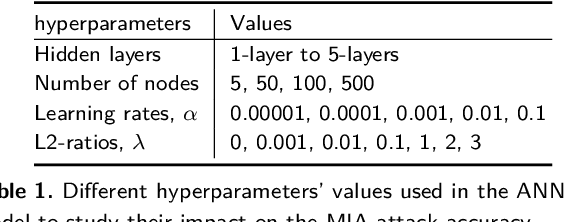
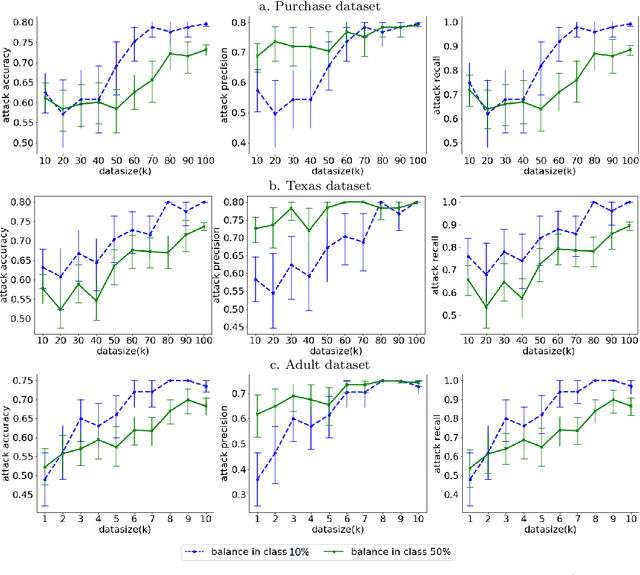
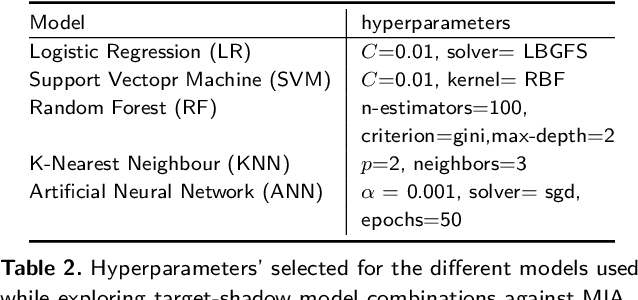

Abstract:Machine Learning (ML) techniques are used by most data-driven organisations to extract insights. Machine-learning-as-a-service (MLaaS), where models are trained on potentially sensitive user data and then queried by external parties are becoming a reality. However, recently, these systems have been shown to be vulnerable to Membership Inference Attacks (MIA), where a target's data can be inferred to belong or not to the training data. While the key factors for the success of MIA have not been fully understood, existing defence mechanisms only consider the model-specific properties. We investigate the impact of both the data and ML model properties on the vulnerability of ML techniques to MIA. Our analysis indicates a strong relationship between the MIA success and the properties of the data in use, such as the data size and balance between the classes as well as the model properties including the fairness in prediction and the mutual information between the records and the model's parameters. We then propose new approaches to protect ML models from MIA by using several properties, e.g. the model's fairness and mutual information between the records and the model's parameters as regularizers, which reduces the attack accuracy by 25%, while yielding a fairer and a better performing ML model.
 Add to Chrome
Add to Chrome Add to Firefox
Add to Firefox Add to Edge
Add to Edge